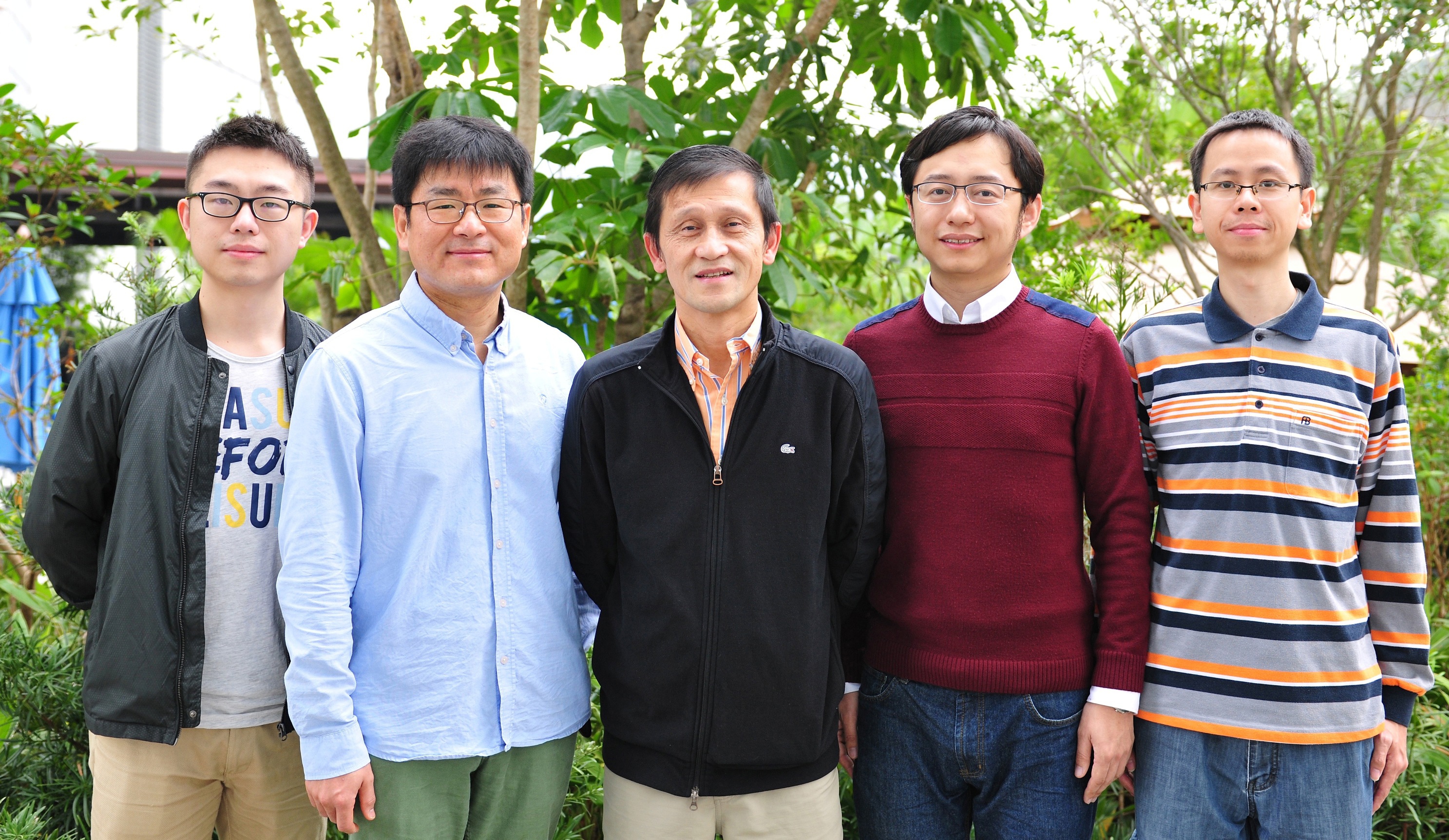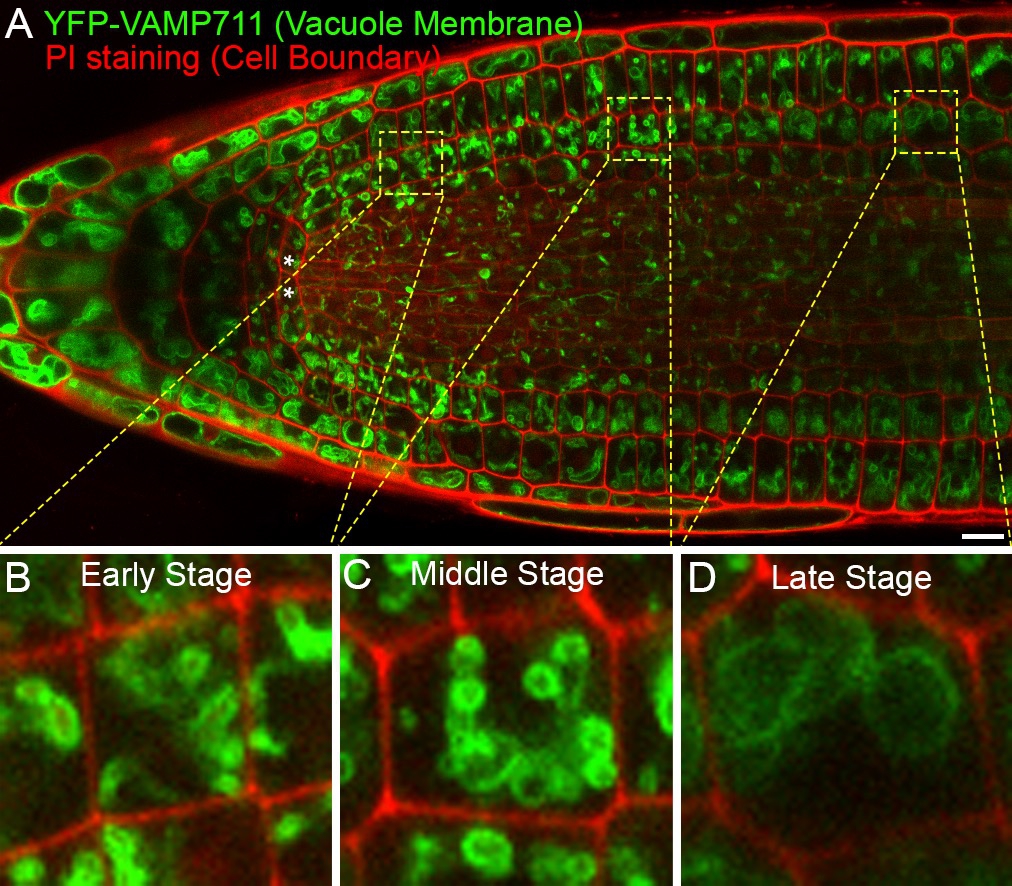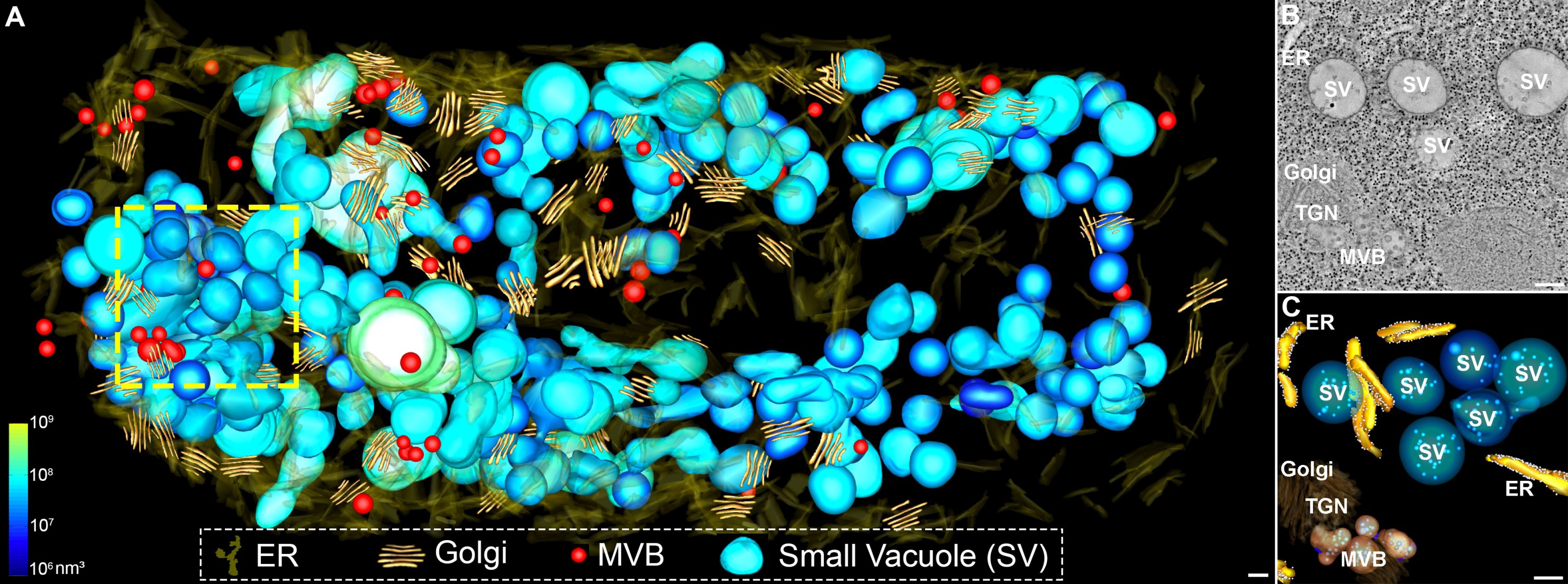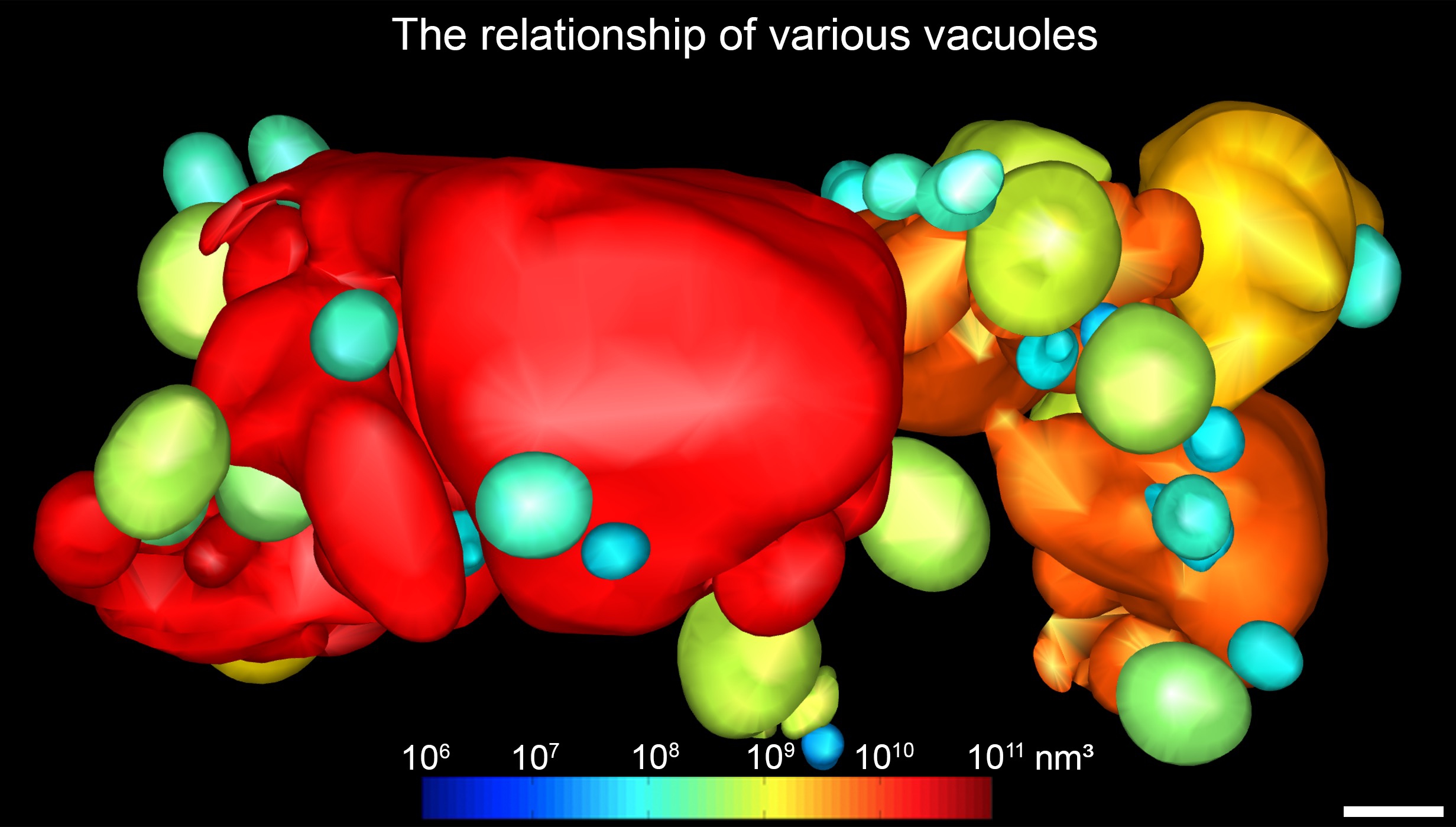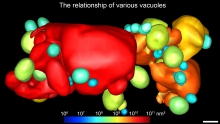News Centre
Major Progress Made in Plant Vacuole Biogenesis Research by CUHK ResearchersProviding New Insights into Improving Crop and Producing Pharmaceutical Proteins by Plant Bioreactors
A team of researchers at The Chinese University of Hong Kong (CUHK) led by Professor JIANG Liwen, Choh-Ming Li Professor of Life Sciences, in collaboration with scientists from Japan and the United States, has recently made a major breakthrough in revealing the molecular mechanisms of vacuole formation in plants. They have used cutting-edge 3D electron tomography (ET) at nanometer-resolution to illustrate vacuole biogenesis in Arabidopsis root cells. The results have been published in the prestigious scientific journal Nature Plants and highlighted on their website.
The plant vacuoles are the most prominent organelles that play essential roles in regulating growth and development. They harbour distinctive features including lytic function, the storage of proteins and sugars, maintenance of turgor pressure, the balance of cell volume and defence responses. In addition, vacuoles are regarded as ideal compartments for storing and producing pharmaceutical proteins in plant seed bioreactor. Despite their dominant size and functional versatility, the underlying mechanism of lytic vacuole biogenesis in plants has still been a matter of controversy for the past 40 years, and two distinct models have been proposed. Some claim that separate vacuoles are formed by the fusion of endosomes while some believe that the vacuole is derived from the endoplasmic reticulum (ER) as a single interconnected organelle. However, these two models are mainly based on studies of 2D transmission electron microscopy (TEM) and 3D confocal imaging respectively. Given the complexity and dynamics of plant vacuoles, the model of vacuole formation should be better revealed at the nanometer-level by 3D TEM or whole-cell tomography.
Professor JIANG’s research team has been working on the underlying mechanisms of protein transport and organelle biogenesis in plant cells at CUHK for more than 18 years and has been internationally recognised as a leading group in the field of plant cell biology. In the recent study published as a Nature Plants article, his research team takes advantage of the 3D ET technique in combination with field emission scanning electron microscopy (FE-SEM) and a photoconversion technique to study the vacuole biogenesis at different developmental stages within a well-known cell layer, which has allowed them to probe into vacuole biogenesis in 3D whole-cell tomography at nanometer resolution.
Major novel findings from this study include:
(1) 3D ET demonstrated that separate small vacuoles (SVs) with size ranges from 400 nm to 1,000 nm in diameter served as the nascent vacuoles (Figures 1-2);
(2) These SVs contained intraluminal vesicles (ILVs) and derived from multivesicular bodies (MVBs) fusion (Figure 2);
(3) Whole-cell ET analysis showed the nature and relationship (fusion and separation) of various vacuoles of different sizes in root cortical cells (Figure 3).
Based on the above findings, the research team has proposed a new 3D model of vacuole biogenesis in plant cells – vacuoles are mainly derived from MVB-MVB fusion and maturation, which involves multiple consequent steps of fusions that are regulated by specific molecular regulators (Figure 4). This model is important for directing future research in plant vacuoles.
This study is evolutionary and timely because it not only reveals the fundamental and dynamic details of vacuole biogenesis but also serves as a basis for future studies of vacuole dynamics and functions in response to different environmental cues. Further research on the important roles of vacuoles in plants will provide new insights into how to improve crop quality to overcome a stressed environment or pathogen infection, which have become serious problems in agriculture, as well as how to use and manipulate vacuoles (in particular seed protein storage vacuoles) in plant bioreactor for pharmaceutical proteins. In addition, this study also establishes a high standard for using 3D ET for precise organelle reconstruction in the future study of organelle biogenesis.
Professor JIANG said, “This is some of our best work in 18 years funded by our AoE/CRF projects. This work has redefined the concept of vacuole nature and vacuole formation in plants in textbook which will certainly have a significant impact on the applied plant biology. Vacuoles are essential for regulating plant growth and development, as well as responses to stresses. In plant bioreactor, vacuoles in seeds are ideal compartments for storing and producing pharmaceutical proteins for treating human disease. The research finding has provided new insights into producing pharmaceutical proteins.”
This study was mainly carried out by one postdoctoral fellow (Dr. CUI Yong) and two Ph.D. students (Mr. CAO Wenhan and Mr. HE Yilin) in Professor JIANG’s laboratory. The project was supported by the Areas of Excellence (AoE) Scheme and Collaborative Research Fund (CRF) of the Hong Kong Research Grants Council, as well as the AoE Centre for Organelle Biogenesis and Function, Centre for Cell and Developmental Biology, and the State Key Laboratory of Agrobiotechnology of CUHK.
Graduate students and postdoctoral researchers supervised by Professor JIANG have received many prestigious awards for their research excellence, with more than 15 of them becoming independent principal investigator in Hong Kong, mainland China, Singapore and the USA.
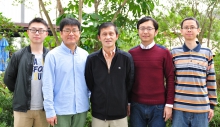
A research team led by Professor JIANG Liwen (middle) of the School of Life Sciences which has shed new light on the plant vacuole biogenesis. (From Left) Mr. CAO Wenhan, Professor KANG Byung-Ho, Professor JIANG Liwen, Dr. CUI Yong and Mr. HE Yilin.
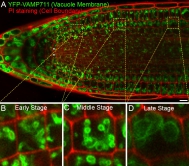
Figure 1. (A): Full view of vacuole patterns (green colour) in the root tip of transgenic Arabidopsis plant expressing the tonoplast (vacuole membrane) marker YFP-VAMP711 (green color) in which the PI staining (red color) indicates the cell boundary. (Scale bars: 10 μm) (B-D): Three enlarged boxes of A, showing representative vacuole morphology in different developmental stages of cells with different sizes of vacuoles.

Figure 2. (A) Whole-cell electron tomography analysis of newly identified small vacuoles (SVs) in relationship with other organelles (endoplasmic reticulum-ER, Golgi apparatus and multivesicular body-MVB) in a cortical cell of early developmental stage. (B and C) These SVs contain intraluminal vesicles (ILVs) and are distinct from MVBs, as shown in a higher magnification view of the boxed area in (A). (Scale bars: 200 nm)
